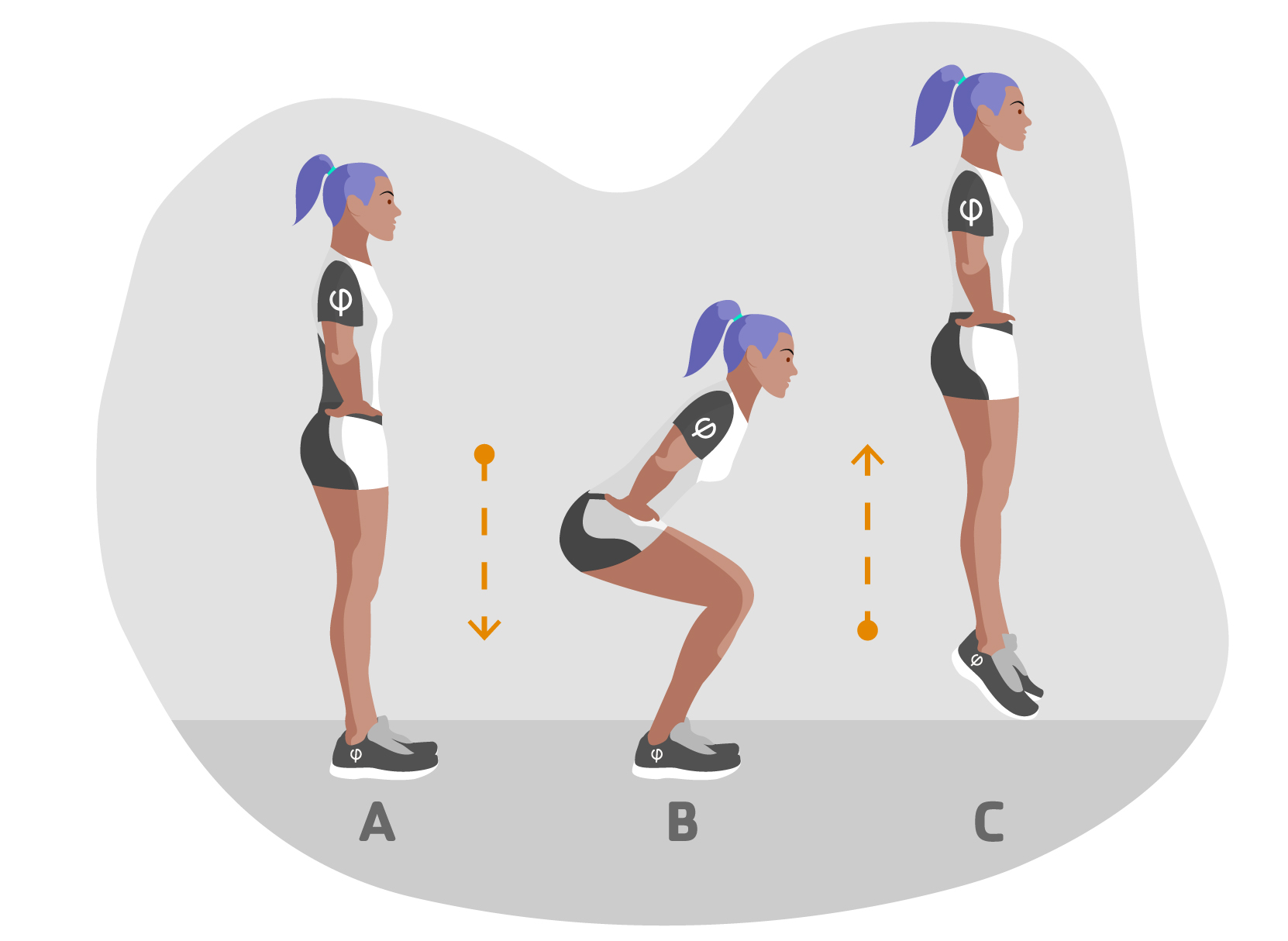
Countermovement jump (CMJ)
The main objective of the countermovement jump test (CMJ) is to measure the elastic explosive strength of the lower limbs. The CMJ test is part of the Bosco vertical jump test battery to assess the functional, neuromuscular and morphophysiological characteristics of the extensor muscles of the lower limbs. The type of muscular action developed in this test is concentric contraction preceded by a very brief phase of eccentric contraction.
- Required Material: Different measuring instruments can be used, such as: force platforms, contact platforms, optical position transducers (infrared), accelerometers, video analysis or even specific software and apps.
- Procedure: In this test the subject is in an upright position with hands placed on the waist, and must perform a vertical jump after a rapid downward countermovement. The subject should bend his/her knees to an angle of 90 degrees and should avoid trunk flexion at all times in order to eliminate any positive influence to the jump that does not come from the lower limbs. During the entire flight phase, the subject must keep the trunk and lower limbs fully extended, until the landin, when he/she will fall on his/her the metatarsal area and then on the heel. This is a similar test to the Squat Jump (SJ), with a different starting position. The reachable height can be affected by the angle the subject bents his/her legs, so the test may be invalidated if he/she does not bend the legs the required 90 degrees.
- Assessment: The height of the jump must be measured in centimetres (cm) and the subject has a maximum of 3 attempts. In Fisicalcoach, the highest height reached by the subject can be recorded, as well as the mean and the median. In addition to jump height, different variables of interest depending on the measuring instrument can be recorded.
- Remarks: The purpose of the countermovement action is to harness the elastic energy stored in the quadriceps when the knees are flexed. The contribution of the elasticity of the muscles and tendons is much greater in those actions that include a stretch-shortening cycle. The Countermovement Jump or CMJ may alter results due to neural and musculotendinous factors, giving less reliable results than the Squat Jump (SJ).
Take this test and 139 more in our App